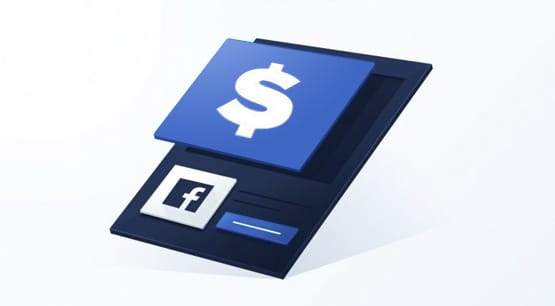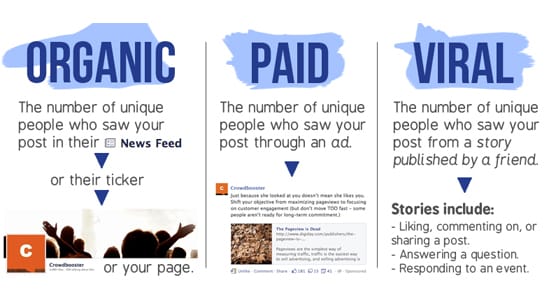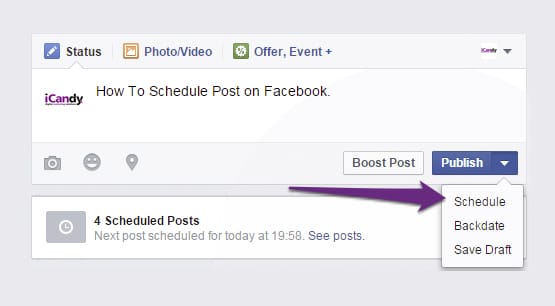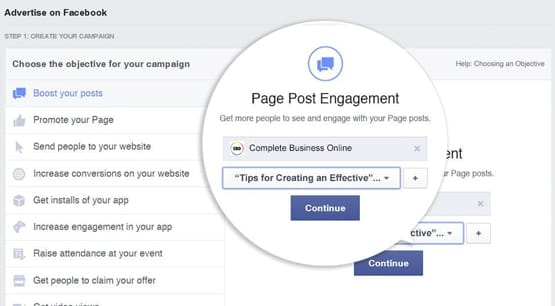Does Running Facebook Ads Improve Your Organic Reach?

Facebook measures reach in several different ways. In order to understand reach in general, you need to know how it’s measured and what actions can affect it.
The Three Types of Reach
Let’s start simple. Reach, in general, is defined as the number of people who see – or who can potentially see – your posts when you make them. I say “potentially” see because there’s no way to distinguish between people who “see” a post but scroll right past it without reading it, and people who actually pause to read the post. If neither group engages with the post, they’re identical. For the purposes of reach, though, it doesn’t really matter.
Reach, then, is split up into three different categories, all based on the cause of the post showing up in a feed. The three categories are Organic, Viral, and Paid.
Organic reach is the people who see your post in a “first degree” separation. These are the people who follow your account, and thus are eligible to see your posts when you make them. Organic reach is arguably the most important, because it’s an audience made up of the people who have explicitly opted in to seeing your content.
Organic reach is itself defined by EdgeRank. Facebook’s EdgeRank algorithm is the calculation made between you and each person who could individually see your posts. The type of post, the age of the post, and the timing of the post all have an impact, but the most important aspect of EdgeRank is recent engagement history. If a user has engaged with your posts recently, they will see more of your posts in the future. If they haven’t engaged recently, they’ll see fewer of your posts, until eventually they don’t see them at all.
This, incidentally, is why Jon Loomer is such a fan of running ads that target explicitly people who already follow you. You already know they’re interested in your brand, as opposed to people who haven’t followed you. They just might not have seen a post in a while, and thus their interaction has dropped to the point where they fall out of your organic reach. More on this later.
The average organic reach for a Facebook Page has been dropping over the years, mostly due to the aggressive content filters and the sheer number of posts an individual account would see in a day without those filters. If a person has 100 slots for posts in a day, reach will be higher if there are only 300 pages vying for that space, as opposed to thousands.
The second type of reach is Viral Reach. Viral reach is the “second degree” separation views. Whenever someone who follows you shares one of your posts, everyone who sees the shared post is added to viral reach, rather than organic reach.
Now, viral reach is in fact a kind of organic reach, it’s just useful to separate the people who see from your primary post and people who see from a shared post. It lets you have some idea of how your audience is performing versus how widely shared your posts are. In all other ways, viral reach and organic reach are basically the same.
It’s arguable that viral reach is the most important kind of reach, because it’s people who aren’t necessarily part of your audience already. It’s broadened exposure you wouldn’t normally get with your posts, which is always valuable. You always want to bring new people into the fold whenever possible.
Paid Reach is the third kind of reach. It’s the kind of reach you get when someone sees a post that you paid to boost or promote. Using the boost post feature to gain exposure on a post, or turning a post into an ad using the promote a post feature, will both add any new viewers to this third category of reach.
Obviously, it’s necessary to monitor this kind of reach because without it, you wouldn’t have any idea how your reach-based ads would perform. Facebook maintains this type of reach so you can see how much your money has gotten you, and use that metric to compare to other metrics. For example, you can compare your paid reach to your conversions from the post, and from a non-promoted post, to get an idea of how simple exposure ads can affect your conversions.
It’s arguable that paid reach is the most important kind of reach simply because you’re paying for it, rather than getting it for free. You want to pay close attention to how your paid audience performs, so you know if you’re targeting your ads properly or not. If very few of those people go on to follow your account, you’re not gaining as much from the ads as you could be with more precise or slightly different targeting.
Paying for Organic Reach
Now, the question in the title is pretty direct. Does paying for ads increase your organic reach?
To answer directly, no. Paying for ads will increase your reach, but that reach will all be categorized as paid reach. However, that’s not really the full story, is it?
What if you pay to put your post in front of someone, and that someone shares the post organically? When that person’s friends see the post, does it count as paid reach or as viral reach? I’m not certain, myself, but I believe it counts as viral reach. You’re not charged for those additional views through Facebook ads, which implies that it’s not paid reach, after all.
There’s also another layer to things which I glossed over above, when I mentioned Jon Loomer. Jon is a top-tier Facebook marketer, so you could say he knows a few things. He’s posted a few times about how one of the highest performing custom audiences for Facebook ads is simply people who already follow his page.
The primary reason for this is just that those people already opted into seeing your messaging and will be less likely to think a post is out of place in their feeds. Whenever you see an ad on Facebook, you already know that it’s not something you followed, so you may be less likely to engage with the post. However, when that post comes from a brand you followed, you’re more likely to engage because you know and trust the brand.
Well, that’s the theory. Obviously, it depends on where the follower came from. If they initially followed you to enter a contest and don’t really care about your brand in the first place, they aren’t really all that likely to want to keep seeing your posts. In fact, they may be inclined to unfollow your page because of it.
This is both good and bad. On the one hand, your Facebook quality score and your ad performance go down when someone unfollows you because of an ad. You may end up having to pay a bit more for your ads because of it. On the other hand, it refines your audience. You have one fewer person who doesn’t care about you in your audience, so your future ads and organic posts are going to reach a higher percentage of people who follow you. Various engagement and reach percentages will increase.
So, paying for Facebook ads can increase your organic reach in the sense that anyone who shares an ad post will be adding to your viral reach. So far as I can tell, at least, that’s how it will be categorized. However, there’s even more to the story.
The other way in which Facebook ads can increase your organic reach is through future posts. If you pay for an ad, you’re putting your content in front of people that Facebook believes are likely to want to engage with the post, as long as those people meet your targeting criteria.
Now, if those people are new to your audience, or if they’re old members of your audience whose EdgeRank has dropped below the visibility threshold, they’ll be seeing your posts for the first time, or at least the first time in a while. If they then engage with the post, they’ll be boosting their EdgeRank rating with your brand. That means, for at least a little while, they’ll be more likely to see your posts in their organic feed.
For new audience members, this is obviously good for a number of reasons. It’s always a good thing to gain new followers who are interested in your content, because they’ll be the people who are most likely to then follow up with eventual conversions.
For returning audience members, it’s a good thing because those people can be reminded why they followed you in the first place. They might choose to convert, or convert again, or they might just pick up engaging with, liking, and sharing your posts to get more of that content. Either way, they see more of you, which means more organic reach for you as time goes on.
Making the Most of Paid Promotion
If you’re interested in paying for ads with the goal of increasing your overall organic reach in the coming months, you certainly can. You can also take some specific actions to help make that technique more effective.
First of all, you want to carefully consider which posts you want to promote. You can’t simply promote everything you post, right? Well, you can, but you’re going to find out two things. First, a lot of your content just doesn’t perform all that well as an ad. Second, when you promote everything, a lot of people are going to see a lot more of your content than they really want to see, which makes it more likely that they’ll unfollow, hide, report, or otherwise dislike your content.
What you want to do is choose content for promotion that is highly focused on engagement. You want the kinds of content that get people talking, with each other in the comments, as much as possible. Content that asks questions, polls readers, or otherwise encourages them to like and share the post will get you the best return.
Secondly, you want to target the right kinds of audiences. There are three basic kinds of audiences you can target.
- First, you have broad category-based audiences. These are audiences you build manually based on what you know of your demographics. You might narrow down by geographic location, but age, by income level, and other demographics. These audiences tend to be broad, cheap, and less effective than others. You can get a lot of exposure, but you won’t necessarily get a lot of followers or reach out of it.
- Second, you have the lookalike audiences. You can build a lookalike audience fairly easily in Facebook’s ad manager. All you need to do is click “create audience” and click “lookalike audience” from there. You have to already have a tracked audience to copy, but that’s easy enough. A lookalike audience is people who match most or all of the demographics and interests of the people who follow you, but who do not already follow you. It’s a good, solid audience, but less effective than the third kind of audience. After all, many of those people might not be following you for a reason.
- Third, you have your existing audience. When you pay for ads that target the people who already follow you, the idea is to reach the people whose EdgeRank rating has dropped low enough that they don’t see your posts organically any more. All it takes is one interaction to bring them back into the fold, at least temporarily. This makes it an extremely valuable audience for building organic reach.
Running some cheap, engagement-driven ads focusing on your existing audience can be a great way to boost the organic reach on your nest few weeks worth of posts by quite a bit. You just have to keep up the quality of those posts to make sure that they’ll keep follow, interacting, and seeing your posts.









